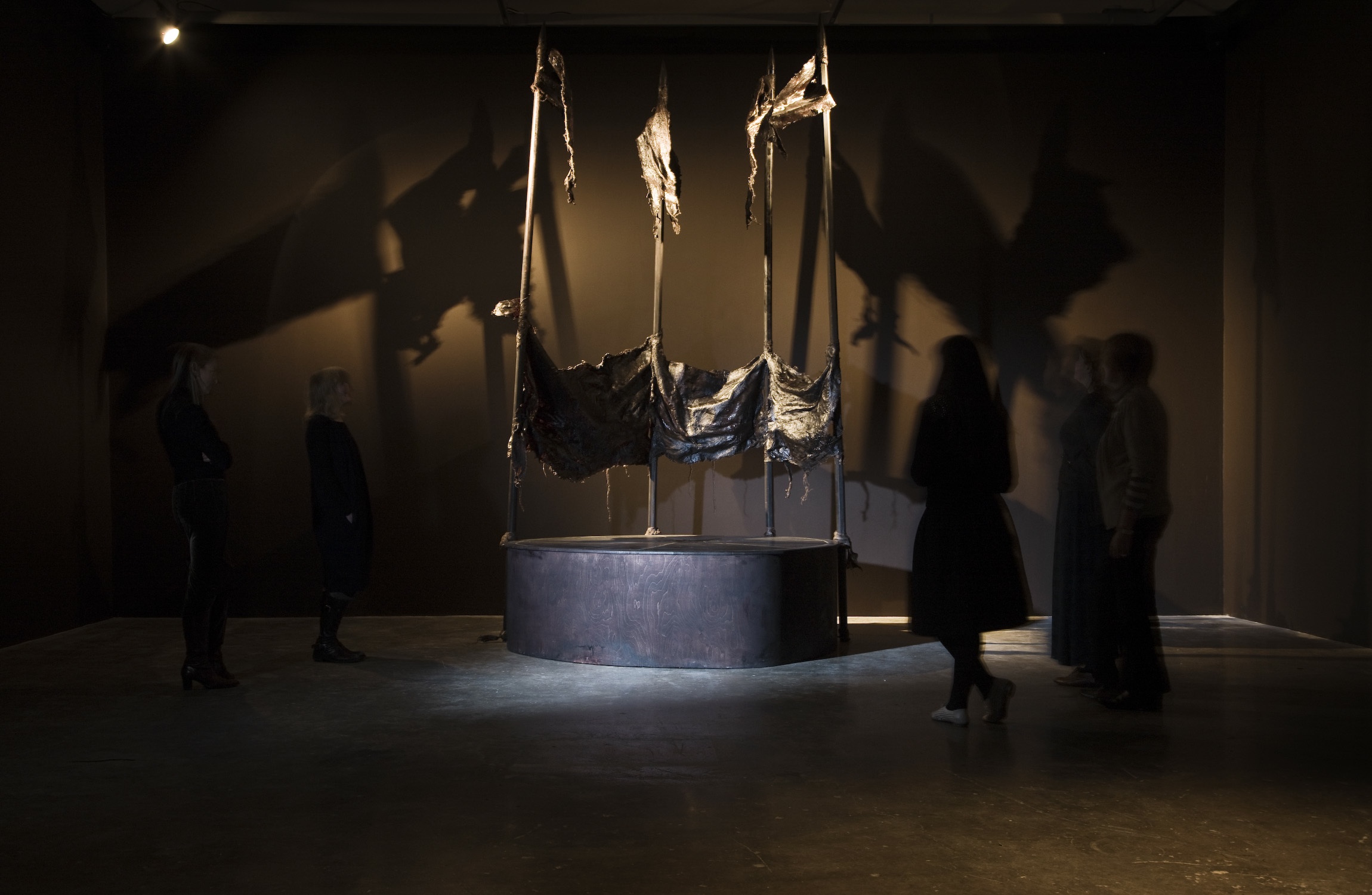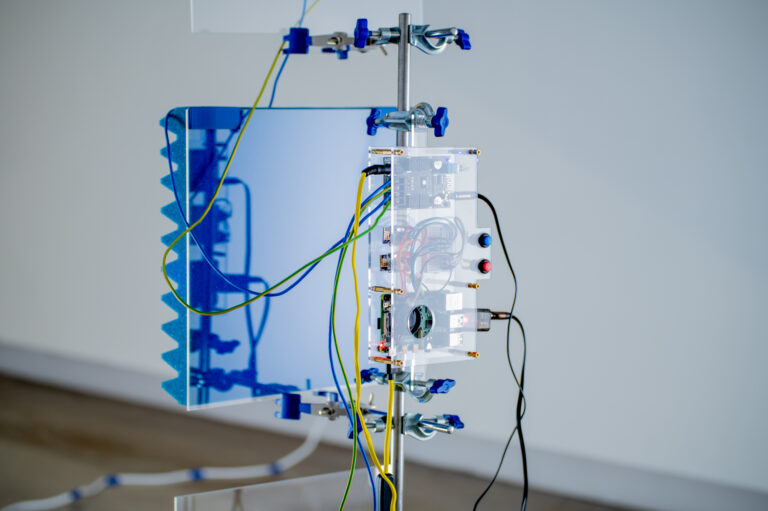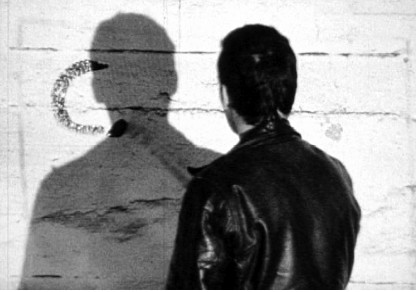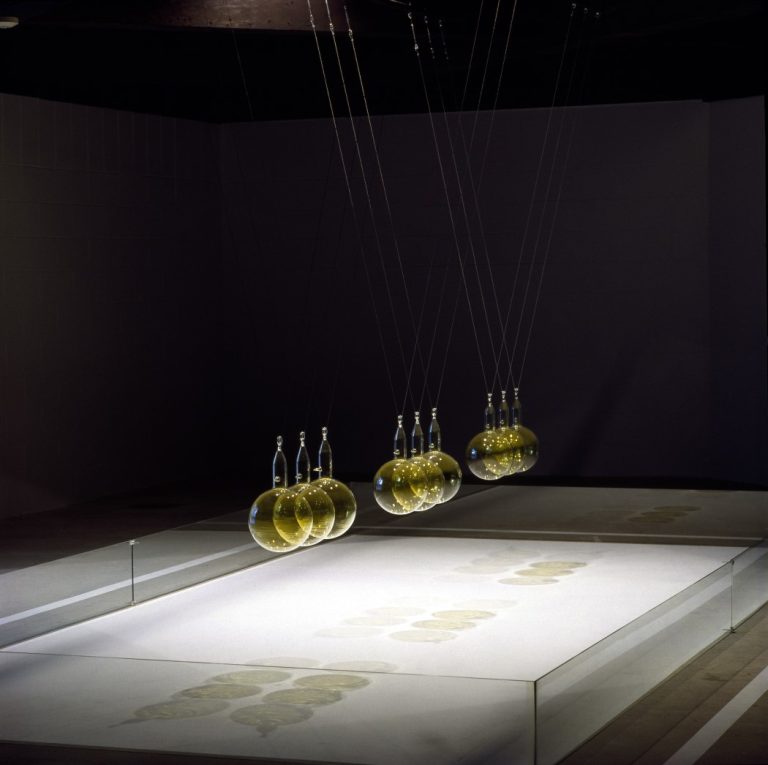A low humming sound beckons me toward a black curtain with a gaping hole torn in its centre. I step around its ragged fabric into a darkened room where a dimly lit sculpture stands against the back wall, casting long shadows. Four black flags are set into a circular platform etched with lines and symbols resembling pagan motifs. The works in Clodagh Emoe’s exhibition Cult of Engagement produce an intense atmosphere, one evocative of ritual and magic.
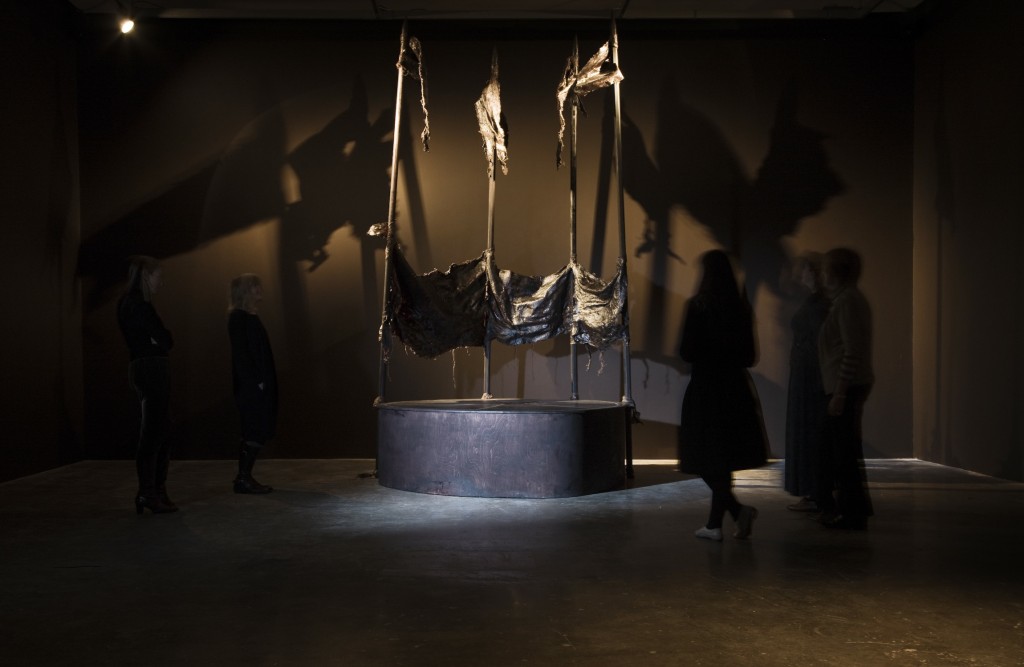
Clodagh Emoe
Cult of Engagement, 2009
Exhibition view
Image courtesy Project Arts Centre
Opposite to the sculpture, a wall-length projection shows a recognisably Irish landscape at dusk – a grassy verge in the foreground bordered by a row of trees. In the opening section, lights appear in the background to create a flickering rhythm, back and forth. These lights emerge to be lamps, carried by a dozen people who pass from the woods down onto the grass and approach the camera, in unison, wearing red hooded shawls over black clothes. Their faces are obscured by white masks with hooked noses, ridding them of any identifying features. Here they stop and look at us through blank, unyielding faces.

Clodagh Emoe
Parados, 2009
Exhibition view of film
Image courtesy Project Arts Centre
This exhibition proved an unexpected and mysterious interlude in the hubbub of a city besieged by Christmas shoppers and last-minute festive activity. The room seems to exist out of time, in an another world. Nearly hypnotic in its pulsating regularity, the dull hum reverberates against the black walls and envelopes the viewer. The procession takes place at twilight, that uncertain and magical time between night and day. Their attire and stately gait are reminiscent of cinematic depictions of cults. Standing in the shadows, watching this cloaked ritual creates an unsettling air in the room.
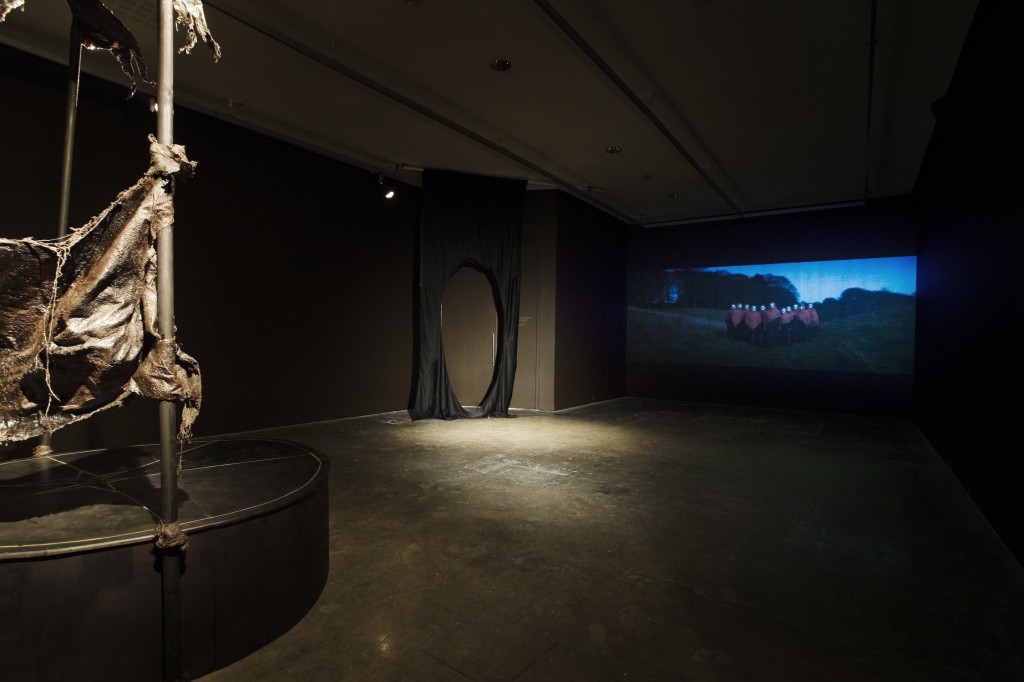
Clodagh Emoe
Cult of Engagement, 2009
Exhibition view
Images courtesy Project Arts Centre
As viewers of the three works, we are subtly choreographed to play the roles of chorus, audience and actor. The curtained Approach draws us onto the stage where we find the ossified flags of Azimuth which, frozen in time, symbolise the ancient theatrical concept of kairos – time that is neither chronological nor representable, but lasts the duration of an act or event. The video, Parados, harkens back to the chorus of Greek drama who would enter the stage in a procession. [1] Though not regarded as individuals in their own right, they played a pivotal role, revealing truths about the actions of the protagonists onstage. In this way, the work functions as an event, revealing a route of procession while its ambient, otherworldly sound producing an air of expectation.
Though the chorus invokes the act of revelation, their intent is ambiguous. The meaning of the carvings on the sculpture seems beyond our understanding – mysterious etchings recalling a lost iconography. Perhaps this is to be expected of an artist who claims ‘disorientation’ as a main line of inquiry for her practice.[2] Emoe’s work explores the act of searching for meaning by adopting a position of liminality. Disoriented in a dark, beating space, our attempt to understand the strange icons and unfamiliar territories can be likened to the cognitive procedures of our everyday life; patterns are sought in the effort to understand the world around us. For Emoe, these acts of ritual and theatre are the work, rather than any exalted object.
Notes
[1] A ‘parados’ is sung by the chorus as they process onstage.
[2] http://www.gradcam.ie/people/clodagh_emoe.php
Ciara Moloney is a writer who lives in Dublin.

